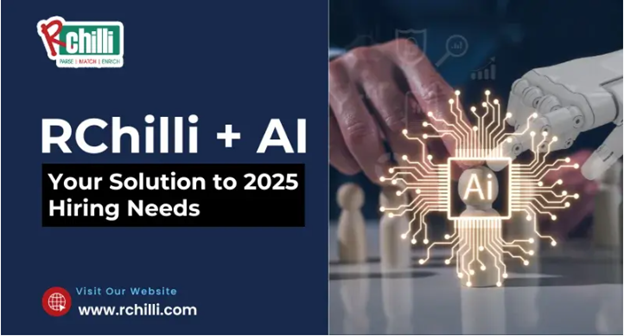Now, picture this marketplace as your talent marketplace, brimming with diverse capabilities, each bringing unique strengths. But navigating this market isn’t always straightforward. Some stalls are hidden in shadows, others cluttered with barriers that prevent access.
Your journey requires you to slow down, map the terrain, and embrace the power of inclusive hiring—because this is no ordinary shopping trip. It’s about equity, accessibility, and crafting a workforce as vibrant as the marketplace itself.
To find these treasures, we must address the four key barriers: unconscious bias, accessibility, process inefficiencies, and the need for intentional strategies. Let’s uncover how these challenges can transform into gateways to inclusive hiring success.
How to Overcome Recruitment Barriers in 2025
Creating a diverse and inclusive workforce is not just a moral imperative; it’s a strategic necessity in today’s business landscape. Yet, many organizations face hurdles in sourcing, selecting, attracting, and retaining diverse talent.
Organizations can unlock the potential of an inclusive workplace by addressing these challenges with innovative strategies and leveraging the latest advancements in HR technology.
Here’s how to tackle four major recruitment challenges and transform them into opportunities for growth:
Challenge 1: Unearthing Hidden Gems in Diverse Talent Pools
Despite claims of limited talent from underrepresented groups, the talent pool is rich and diverse. The challenge lies in how organizations approach their sourcing strategies.
Solutions:
- Craft Inclusive Job Descriptions: Streamline job requirements to focus on essentials and key tasks. Using inclusive, gender-neutral language and diversity statements fosters a welcoming tone.
- Expand Referral Networks: Avoid relying solely on internal referrals. Instead, engage external networks, associations, and diversity-focused groups to widen the talent pipeline.
- Tap into New Talent Pools: Explore candidates with transferable skills from adjacent industries or those outside traditional job boards.
- Support Return-to-Work Programs: Facilitate re-entry into the workforce for experienced individuals, especially women, through well-designed return-to-work initiatives.
- Promote Networking Opportunities: Create or sponsor affinity groups and events, enabling diverse talent to connect with your organization.
- Launch Diverse Internship Programs: Build your talent pipeline by targeting promising candidates from underrepresented backgrounds early in their careers.
Impact: These actions can enhance hiring productivity, provide access to a broader skilled talent pool, and increase candidate relevancy, making sourcing more efficient and equitable.
Challenge 2: Building Fair and Bias-Free Selection Processes
Many underrepresented candidates exit the recruitment funnel during the selection phase due to unconscious or structural biases embedded in the process.
Solutions
- Implement Objective Assessments: Standardize candidate evaluation by leveraging consistent, data-driven benchmarks focusing on measurable skills and competencies. These tools minimize the influence of personal biases and promote equitable hiring decisions.
- Adopt Structured Interviewing: Design interview guides that focus on specific job competencies and success metrics. This ensures that every candidate is evaluated against the same criteria, reducing inconsistencies and creating a fair process.
- Train Interviewers: Conduct dedicated coaching sessions to help interviewers recognize and mitigate biases. Scenario-based exercises and role plays can effectively highlight subtle biases and teach interviewers to focus on competency rather than assumptions.
- Gather Candidate Feedback: Regularly collect input from candidates to identify and address potential barriers in your selection process. Feedback helps organizations refine their approach and maintain transparency with talent.
- Enable Bias-Free Selection Processes: Modern HR solutions can streamline and anonymize candidate information by removing details that might inadvertently introduce bias. For instance, advanced solutions such as resume parser now incorporate redaction and design features to conceal details like names, gender, and educational institutions. This ensures interviewers evaluate candidates based purely on their qualifications and skills, promoting an unbiased and equitable hiring process.
Impact: These steps increase hiring efficiency, improve decision-making, and foster an equitable assessment framework.
Challenge 3: Enhancing Organizational Attractiveness to Diverse Talent
Attracting diverse candidates isn’t just about offering a role; it’s about demonstrating a genuine commitment to inclusivity and creating an environment where diverse perspectives thrive.
Solutions:
- Highlight Career Growth: Share testimonials and examples of diverse employees’ career progress to emphasize opportunities for advancement.
- Show Transparency with Diversity Data: Share your organization’s diversity metrics and goals to build trust and authenticity.
- Showcase Representation: Include diverse team members in interviews and offer connections to resource groups for candid insights.
- Customize Rewards and Benefits: Tailor benefits packages to address candidates' varied needs, such as inclusive family leave policies or mental health support.
Impact: These initiatives boost employer branding, increase application rates, and improve the conversion of diverse candidates into employees.
Challenge 4: Fostering Retention Through Inclusive Cultures
Hiring diverse talent is only the beginning. Retention depends on cultivating a culture of belonging where employees feel valued and supported.
Solutions:
- Design Inclusive Onboarding Programs: Create onboarding experiences that reflect a commitment to diversity and inclusion from day one.
- Maintain Engagement with New Hires: Schedule follow-ups with new hires to address challenges or celebrate milestones, ensuring their integration into the team.
- Support Development Through Mentorship: Introduce structured mentorship programs that foster growth and demonstrate clear paths for career development.
- Empower Employee Resource Groups: Encourage resource groups to act as platforms for shared experiences, future leadership identification, and educational initiatives on diversity.
Impact: An inclusive workplace culture improves engagement, boosts retention, and strengthens organizational reputation, reducing turnover costs.
A Strategic Shift Towards Inclusive Excellence
Organizations can overcome recruitment challenges at every stage by embracing advanced HR tech solutions like streamlined data management, skill-based search, and real-time analytics. As the workplace evolves, these strategies ensure businesses remain agile, inclusive, and competitive in a rapidly changing world.
Author Bio:
Snehil Sharma is a seasoned SaaS Senior Content Writer with expertise in crafting impactful narratives for the HR technology and recruitment industry. Learn more about innovative solutions for recruitment challenges at RChilli’s Resume Parser.






